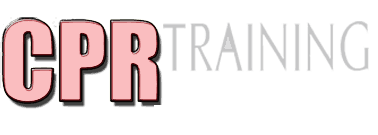Cardiogenic shock is a medical emergency that occurs when the heart undergoes through much damage leaving it unable to efficiently pump and supply blood to body.
Cardiogenic shock is a medical emergency that occurs when the heart itself undergoes significant damage. This causes the heart to be unable to efficiently pump resulting to inadequate supply blood to the organs of the body. If this continues, many of the organs will begin to fail. This is because blood carries the oxygen and other essential substances that are needed by the organs to properly function. Thus when the heart begins to fail pumping enough blood, symptoms of shock begin to show. Thus, when a victim begins to show signs and symptoms of cardiogenic shock, immediate medical treatment is necessary.
Causes of Cardiogenic Shock
Cardiogenic shock occurs when there is significant damage to the heart, leaving it unable to pump ineffectually. The most common cause of cardiogenic shock is myocardial infarction, commonly called heart attack, an irreversible necrosis (tissue death) of the heart muscle due to prolonged ischemia (no oxygen). Fortunately, not everyone that experiences heart attack will experience cardiogenic shock. The following may also lead to cardiogenic shock:
- Coronary heart disease (primary cause of heart attack)
- Myocarditis
- Endocarditis
- Cardiac tamponade
- Arrhythmias
- Pulmonary embolism
Signs and Symptoms of Cardiogenic Shock
Because the organs, such as the brain, kidneys and skin, are not receiving oxygen-rich blood, they begin to show signs and symptoms of cardiogenic shock, which include:
- Confusion or lack of alertness
- Loss of ability to concentrate
- Unconsciousness
- Chest pain
- Sudden, quick heartbeat but accompanied by a weak pulse
- Little or no urine output
- Excessive sweating
- Pale, clammy skin
- Rapid, shallow breathing
- Dyspnea
- Light-headedness
- Cool hands and feet
Complications of Cardiogenic Shock
It is not uncommon to develop complications of cardiogenic shock, especially if oxygen-rich blood is withheld for a prolonged period of time. The following complications may develop:
- Permanent damage to the organs, such as the lungs, brain, etc.
- Irreversible damage to a large section of the heart muscle
- Rupture of heart muscle
- Arrhythmias: ventricular tachycardia, ventricular fibrillation, supraventricular tachycardia, or bradycardia
- Pericardial tamponade
- Tear or rupture of the muscle or tendons supporting the heart valves or septum between the lower heart chambers
First Aid Management of Cardiogenic Shock
Cardiogenic shock is a medical emergency. When an individual begins to show signs of cardiogenic shock, call for emergency medical services or bring the victim to the nearest emergency room right away. In the meantime, give first aid to help avoid complications from developing. The following steps are recommended:
- Check the victim’s circulation, airway and breathing. If necessary, initiate rescue breathing and CPR.
- Constant check rate of breathing every five minutes even if the victim is capable of breathing on his or her own.
- If the victim is conscious with no injury to the head, neck, spine or leg, lay the person down flatly with the feet elevated about 12 inches to increase circulation. The head should not be elevated. This is called the shock position. Avoid moving the victim unless there is danger in the immediate environment.
- Keep the person warm by covering using a blanket or coat. Loosen any tight clothing.
- If there is vomiting or drooling, turn the victim’s head to the side to avoid choking.
Disclaimer: This article does not provide medical advice and should not be substituted for formal training. The information given should not be used for self-diagnosis. Seek medical attention when necessary. It is important to recognise medical emergencies at all times to avoid complications from developing. To learn more about to how to treat and manage cardiogenic shock victims, register for first aid and courses with workplace approved providers.
Sources:
Cardiogenic Shock. (2011). National Heart, Lung and Blood Institute. Retrieved October 16, 2013, from http://www.nhlbi.nih.gov/health/health-topics/topics/shock/
Cardiogenic Shock. (2012). National Institutes of Health. Retrieved October 16, 2013, from http://www.nlm.nih.gov/medlineplus/ency/article/000185.htm
